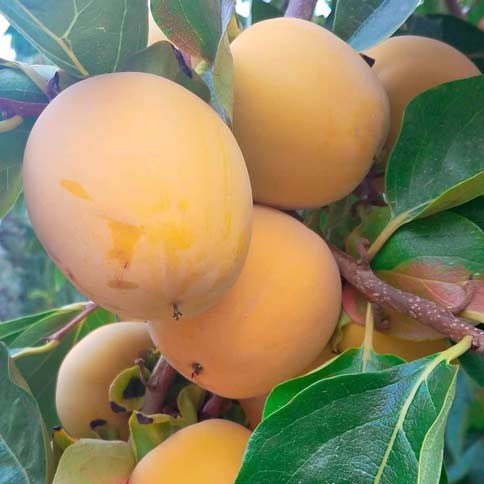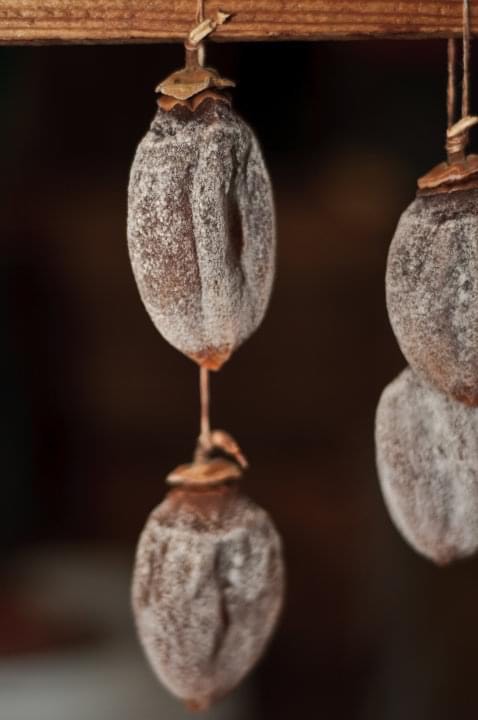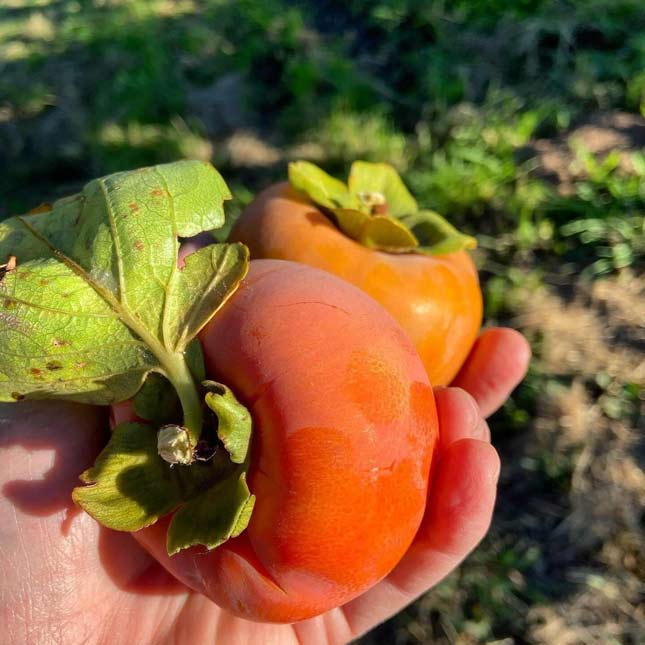The perfect winter fruit, from savory to sweet.
They’re little orange orbs of goodness. With two main varieties, astringent and non-astringent, persimmons are fruits filled with flavor and a great addition to sweet or savory dishes this season.
Camelia Miller, owner of Twin Peaks Orchards in Newcastle, Calif., has enjoyed this often-misunderstood fruit for as long as she remembers.
“Persimmons are a specialty crop that’s been a big part of our orchard since 1912,” she explains. “We have trees over 100 years old that still produce, and they are easily one of my favorite fruits. They just taste like fall and winter with a unique taste that can’t be compared to any other.”
Originating in China, Northeast India, and Northern Indochina, the persimmon has been around for more than 2,000 years. It was introduced to Japan in the seventh century and has continued to draw interest around the globe.
Sweet Taste
When buying persimmons, keep these tips from Miller in mind before tossing the fruits in your basket. More commonly found are astringent varieties, such as the hachiya Asian persimmon, which you can’t eat until it’s soft, almost water-balloon-like to the touch, and attains a beautiful burnt-orange hue.
The flattened, mini pumpkin-shaped non-astringent varieties, including fuyu persimmons, may be enjoyed when firm. Twin Peaks Orchards developed the amagaki version, known as the cinnamon persimmon, decades ago through a process of grafting and pollinating different varieties.
“You can eat the amagaki while it’s firm and it’s super sweet,” Miller notes. “It’s more of a golden color instead of orange, has great hints of cinnamon, and has beautiful flecks of a chocolate color in the flesh. You can eat them firm or a little soft; they are best eaten fresh and not a type you would cook with.”

With either variety, Miller always looks for a nice even color and fresh stem; she says that because persimmons can last for a long time, sometimes the petals near the stem may become dry, but that’s OK.
Local Persimmon Craze
In Reno-Tahoe, persimmons from Twin Peaks Orchards can be found on many menus, including those at Roundabout Catering, Liberty Food & Wine Exchange, and Centro Midtown and Centro South, as well as Moody’s Bistro Bar & Beats, Restaurant Trokay, and Sunnyside Restaurant & Lodge in Truckee-Lake Tahoe.
“Chefs want to cook — and consumers want to eat — what’s in season,” Miller says. “There are traditional ways of cooking with [persimmons], including in cookies, bread, or dessert puddings. With firmer persimmons, you’re seeing people put them in salads, on grazing boards, and on pizzas. Most of the firm fruits roast really nicely and caramelize beautifully. You’re seeing them more in the savory applications. They are great for snacking, but they’re also great to substitute as a seasonal fruit in savory dishes.”
Persimmons in Tradition
Hoshigaki are persimmons that have been dried using a traditional Japanese method in which handlers hang the fruit for three to four weeks, gently massaging them once a week to distribute the sugar inside. Once they are completely dry, they can be stored and eaten much like dates.

Heidi Bethel remembers the first time she had a persimmon. She was in Israel and the streets were lined with non-astringent persimmon trees. Her friend picked one from the branches and rinsed it, and that first bite initiated Bethel’s fondness for the fruit.
Persimmon Drop Cookies
(courtesy of Carol Iwasaki, third-generation farmer at Twin Peaks Orchards in Newcastle. Makes 36 cookies)
1 cup persimmon pulp
1 teaspoon baking soda
1 cup sugar
½ cup shortening or butter
1 egg
2 cups flour
1 cup nuts, chopped
1 cup raisins
1 teaspoon cinnamon
½ teaspoon ground cloves
½ teaspoon nutmeg
½ teaspoon salt
Preheat oven to 375 degrees F. With electric mixer, beat persimmon pulp, baking soda, sugar, and shortening until creamy. Add egg, flour, nuts, raisins, cinnamon, cloves, nutmeg, and salt. Stir until mixed well. Drop by spoonful on greased baking sheet. Bake for 12 to 15 minutes. Remove and place on wire rack to cool.


